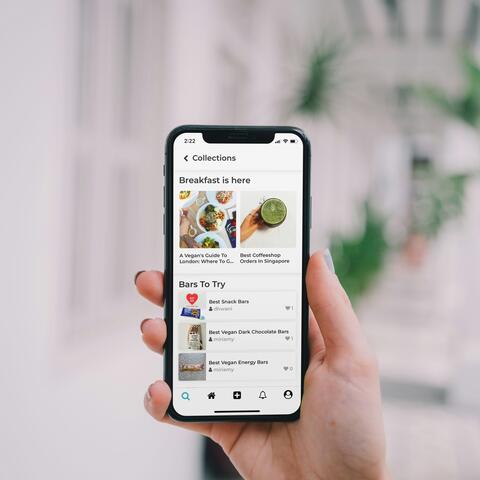First, what is it?
Strategic digital marketing is personalized, targeted, curated marketing that uses your visitor’s data to help us create relevant marketing messages. Strategic digital marketing is also known as Inbound Marketing, and takes the following forms:
- SEO (search engine optimization)
- SEM (search engine marketing)
- Email Marketing
- Social Media Ads
- Content Marketing
It’s not...
Traditional marketing, or Outbound Marketing, that is intrusive and often pretty expensive:
- Billboards
- Print, Radio, TV ads
- Direct Mail
- Telemarketing
Why is this better?
The question - why are we saying digital marketing is better? Well, it comes down to those three magical letters: ROI. Return on your investment is significantly higher with digital marketing, provided you have a smart approach. Let’s dive in:
-
Strategic Digital Marketing is curated for the consumer, making it relevant and helpful rather than random and annoying. Take SEO (Search Engine Optimization) or SEM (Search Engine Marketing, or paid ads that appear in search results) and Content Marketing (blog articles) for example. The consumer is actively seeking out information around some pain point by going to the internet and Googling some keywords that describe what they’re seeking. The consumer clicks through the results to get information, and hopefully something they can act on to solve their problem. Your business showing up as a relevant result, either in organic search results or as a strong targeted advertisement in that consumer’s search will help you stand out as a solution to their problem.
-
Email marketing can work even better. Let’s say a consumer visits your website, signs up for an email newsletter to get the latest information from you, but leaves your website without taking action (a purchase, reservation, event signup, contact submission). Thanks to cookies and automation services (more about this ?), you now have the ability to use tracking and automation to follow up with that consumer with a special offer or additional information on what triggered their interest - - providing the right incentive to convert them to a customer.
-
Strategic Digital Marketing is also incredibly flexible. SEM ad not working as well as you’d like? Change it! Emails not closing the deal? Try a different offer. Compared to the billboard or TV ad that you already prepaid spots and had an agency complete weeks/months ago, digital marketing is agile, allows you to learn and refine, without major costs.
-
It costs less per lead for each conversion. The bottom line: digital ads are not only less expensive in general (no paid actors, film crew, editing, music bed, etc.) but they’re also more effective at converting a lead due to the personalization of each ad. Targeting a specific person or group of people with specific needs, means that you are providing useful information to help them make a decision on products or services.
-
You can learn so much with little effort! Traditional marketing requires that someone to actively share how they got your offer, i.e. entering a specific offer code, bringing in a voucher or visiting unique URL in order for you to know anything about how the marketing is working. With digital marketing, it is simply captured as the user interacts with your ad and your website. What’s even more fun is the ability to easily create A/B tests for any offer - and then hone the keywords and phrases until you get the best performing marketing.
Targeting Behavior and Applying Automation
Behavior targeting and automation are making it easier to gather real data about a customer and create a perfectly timed interaction. Once site tracking code is installed on a page/website, the tracking system begins collecting page view data on each visitor to your website. This data is anonymous (like Google Analytics) until a visitor is identified by opting-in to your list. Once they opt-in, all page views that have been collected up to that point are automatically attached to their contact record and subsequent page views are tracked and reported in real-time.
With a timestamped history of each web page a contact visited on your site, you’ll know:
- when they visited
- how many times
- the paths they’ve taken
Each of your contacts becomes a rich case study when site tracking page view data is combined with all the other data captured - location history, activities history, the contact’s social network profiles, and any tags or other notes applied to the contact. Suddenly, you’re an expert on what your contacts are interested in on your website, and the amount of interest they have.
What do you do with all this data? It would be overwhelming to sort through contacts manually, so here is where the automation makes your marketing smart and simple. We use the ActiveCampaign system to “see” what a visitor is doing and perform actions based on that behavior opening up all kinds of possibilities for marketing automation and creating a truly personalized experience.
For example, with appropriate set up of ActiveCampaign, we could:
- Email a discount code to a contact who has visited a product page two or more times.
- Check in with a contact who has viewed a product six times (but not yet purchased) to find out if they have any questions or issues — helping you identify barriers to purchase while providing excellent service.
- Increase a lead’s score 1 point for each page view and 2 points per visit. When their score reaches 20 points, ActiveCampaign could create and assign a task then notify your salesperson it would be a good time to give the contact a call.
- Send a contact a personalized “thank you” note two hours after they reach the confirmation page of your website’s “tell-a-friend” feature.
- If someone is referred to your site from Facebook, Twitter, or Instagram, you could begin an automation that invites them to follow you on your social media accounts.
- Tag visitors to a specific web page detailing a free webinar you are holding and then begin a sequence of follow-up emails to give them more information as it draws nearer, remind them when it is live, and ask for feedback when it is over. By redirecting attendees to the webinar through a page on your site you can tag them as such (you could also apply this tag using “Clicks a link in email”).
- Send a contact a short “Do you have any questions/How can I help you?” message if they repeatedly visit your FAQ and product documentation pages after a purchase.
- Trigger a “new customer” Automation following a purchase that increases customer satisfaction by delivering a timed sequence of messages including product-use tips, asks for a review of the product after they’ve had it a week, gives them a discount toward future purchases, and suggests other products they may be interested in.
Getting Started
We can help you get your marketing up and moving, starting with some questions:
- Who are your existing/prospective customers? What do you know about them?
- How do they find you? How do they purchase your products/services?
- What do they want to know? What are their pain points?
- What does your marketing/sales funnel look like?
- Have you established baseline data/metrics?
And then moving to a strategic plan that works for your organization:
- Create goals around your marketing
- Understand and develop customer personas and their journey
- Create the content and ads, then share it
- Analyze, test and set new benchmarks and goals
If you're ready to get started with an effective digital marketing plan, reach out! We get all giggly ?at the chance to talk data and user journeys and are excited to help you see some amazing results.






